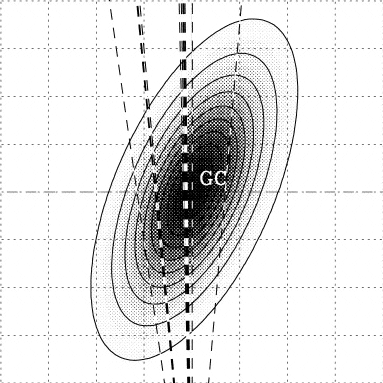
As estimated by Paczynski (1986), only roughly one in a million
stars would be microlensed at any given moment, requiring microlensing
searches to monitor several million stars for extended periods of
time. This is bad news for the microlensing searches (which,
nevertheless, have found and continue to find many microlensing
events), but very good news for variety of projects that can also
utilize the data.
Over the last few years a new branch of astrophysics - galactic
microlensing - has sprung into life. Microlensing was proposed by Paczynski (1986) as a means to confirm or reject
the hypothesis that the dark halo of our Galaxy might consist of brown
dwarfs and planets.
The first microlensing events were discovered in
1994 by MACHO,
EROS and OGLE groups. Although the nature of the dark halo
has not been definitively answered, there are now many important
results which have come as by-products of the microlensing
searches.

The two most significant results of my PhD thesis were direct evidence for (Stanek et al. 1994) and a model of the bar in our Galaxy (Stanek et al. 1997). Most microlensing searches observe their targets at least partially in two bands so that color-magnitude diagrams can be constructed. My PhD thesis was primarily based on the V,V-I color-magnitude diagrams obtained in the first phase of the OGLE project. These color-magnitude diagrams are an excellent tool for studying various properties of the inner Galaxy. They contain many (30,000--100,000) stars and allow extensive statistical analysis.